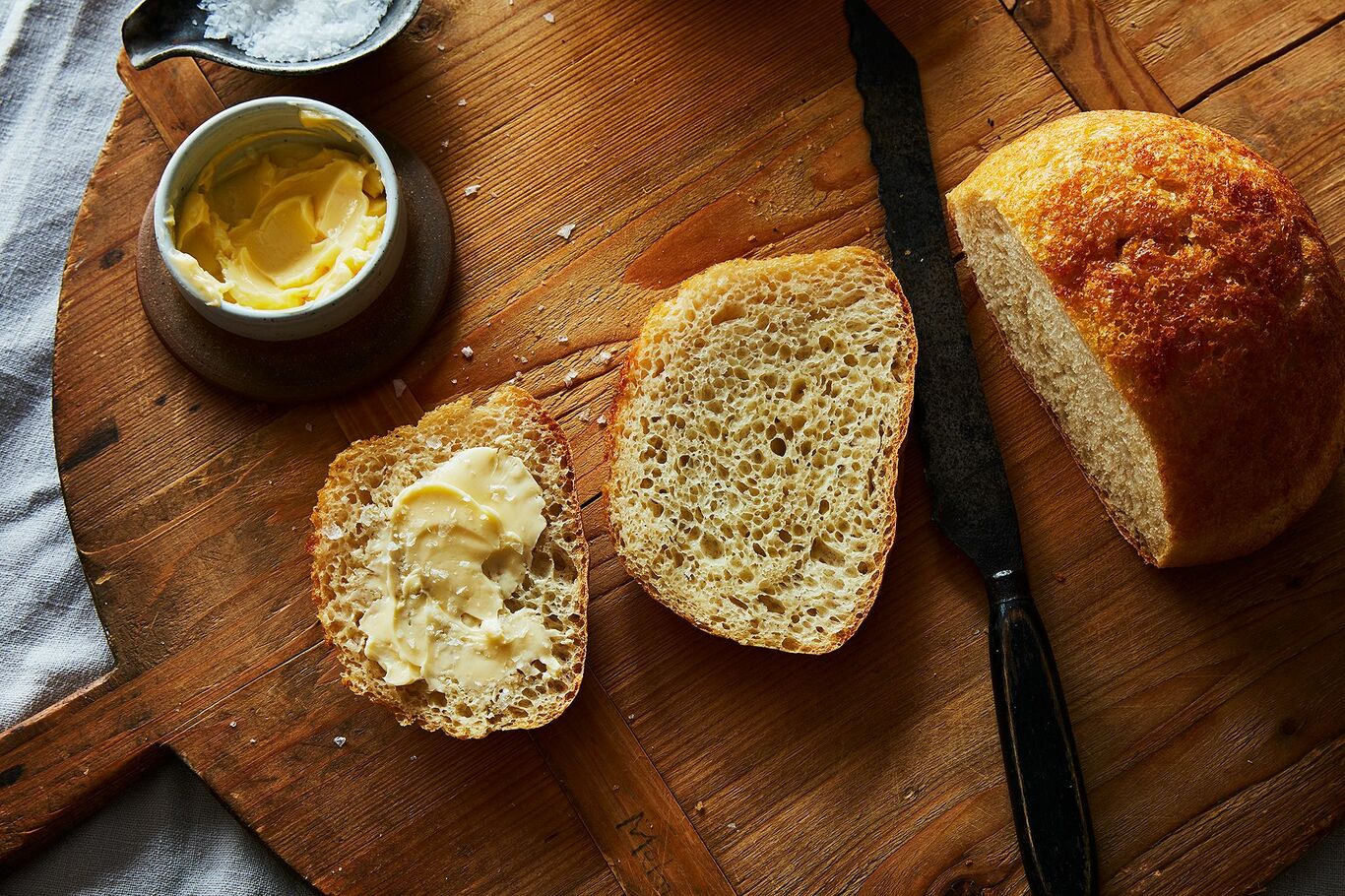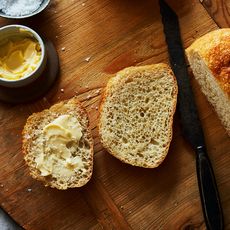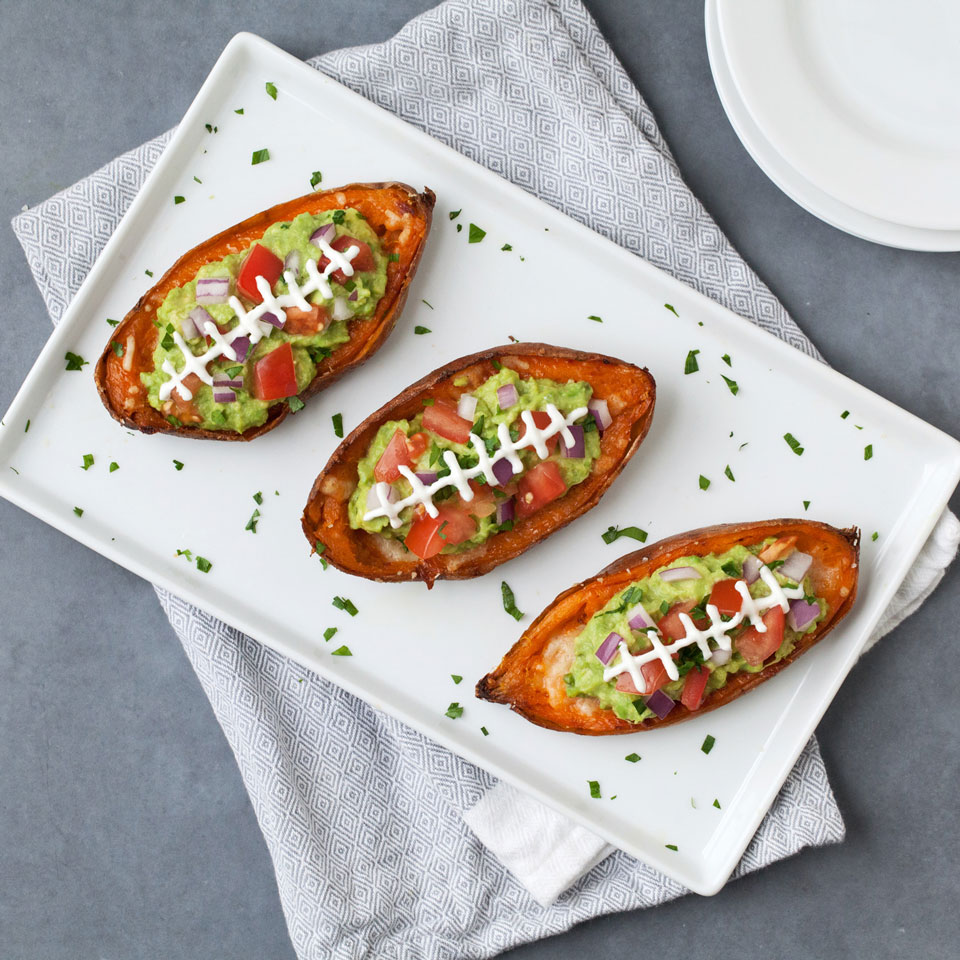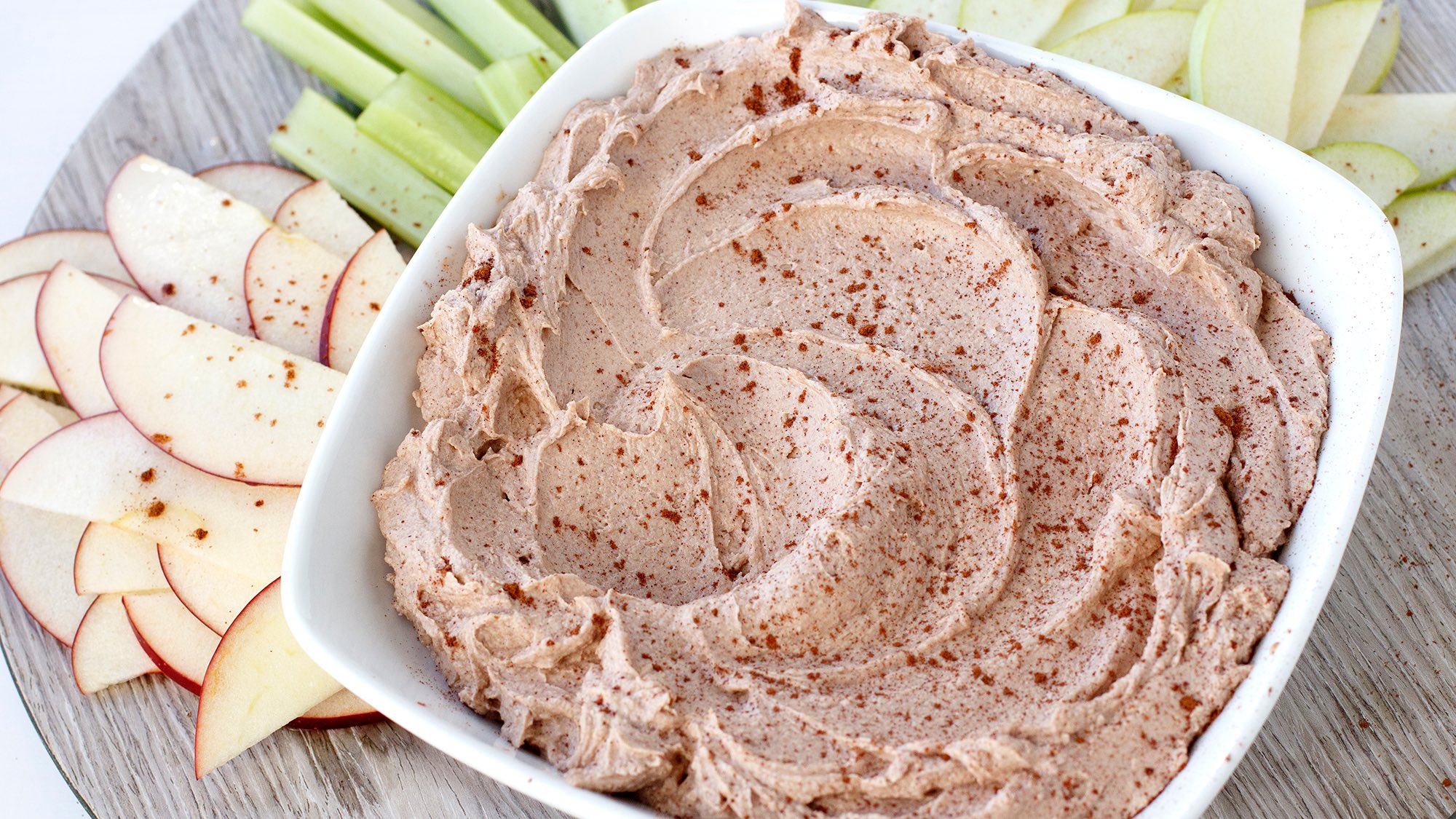This is it: the bread recipe so simple and good, it will get you baking bread every week—even if you’ve never made a loaf in your life. It’s the comforting, no-knead peasant bread that’s ready in as few as 2 hours, unlike other no-knead breads that are ready ... tomorrow.
It's the bread that, despite its relatively short rising time, has plenty of flavor and a lovely, moist crumb checkered with little nooks and bubbly pockets. And—my favorite part, and soon to be yours—a thin, crisp, buttery crust sheltering it all.
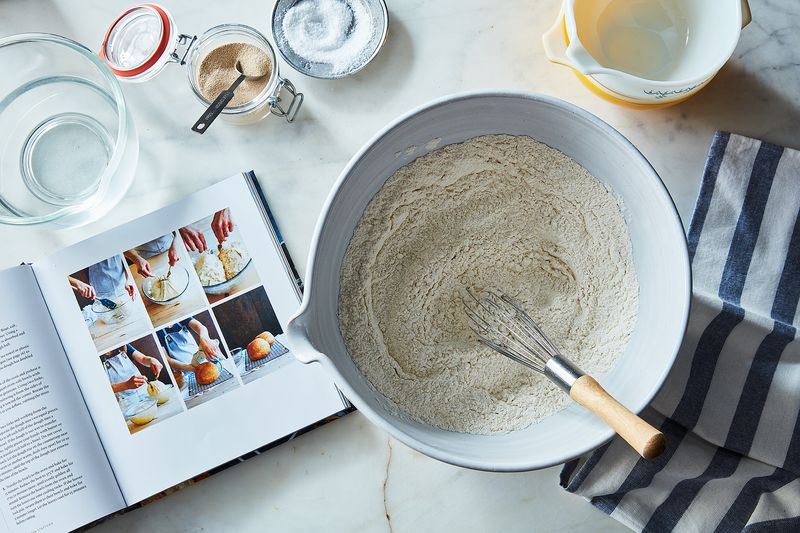
Alexandra Stafford—writer, photographer, and Food52 columnist—has been making this remarkable bread for 20 years, but had long kept the recipe secret, just like her mom had for twenty years before that.
But on Stafford’s popular blog Alexandra’s Kitchen, she had a platform, and an opportunity—to spur on new bakers, and untangle the assumptions that people who bake their own bread need to have special training, or some knack or intuition that others lack. "Some of the best cooks I know still won't open a packet of yeast," she told me.
She wanted her readers to know that making bread can be simple and rewarding, something you can do casually every single week, or on a whim—when you’re craving the scent of a toasted, yeasty cloud in your kitchen or the joy of pulling a warm tuft from a loaf still cooling on the rack.
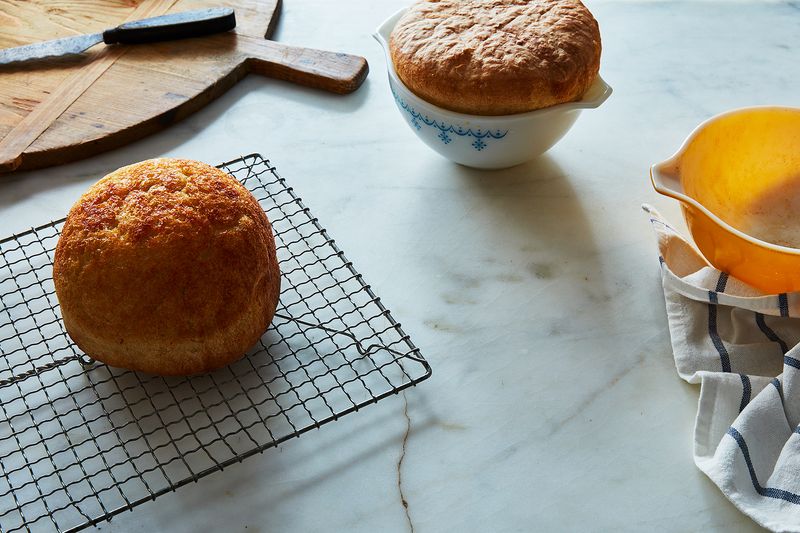
Finally, in 2012 she convinced her mom to let her publish the recipe on the blog. The success of that post led to a book deal. At this writing, there are nearly 3,000 comments on that first post, with many readers claiming that this bread has changed their lives.
"I had never made a single variation of the peasant bread—didn't add a nut, seed, herb, cheese—till readers began writing in asking questions about making variations or sharing their own," Stafford told me. But the book that she and her mom built out of the genius master recipe (called Bread Toast Crumbs—on sale this week!) is a glorious thing—with close to 40 spin-off recipes for different types of bread, plus dozens of ways to use leftover slices and crumbs in all sorts of meals like the wildly popular ones she shares here on Food52 every week. Sarah Jampel, our indomitable Senior Staff Writer, has tested and documented 5 of those 40ish loaves here.
But why is the bread so smart and special? And how can you have a dough that’s so well-flavored and well-risen in so little time?
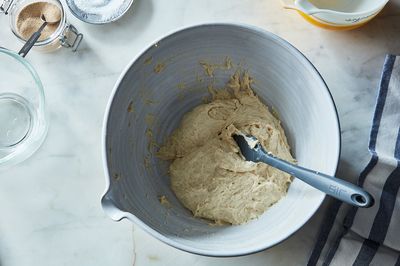

Just mixed (left) and after its 1 1/2-hour rise (right).

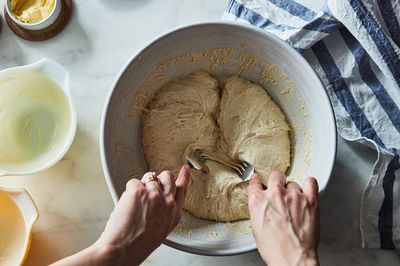
The risen dough's wet and sticky, so you'll use two forks to split it in two.
The most novel and important part of the technique is that the dough bakes directly in buttered Pyrex bowls (though you can easily modify for standard loaf pans). As Stafford told me, "My mom had adapted the recipe from an old French bread recipe. For whatever reason—probably being busy with three kids—she decided to skip the handling/shaping/cornmeal-coating steps and bake the dough in buttered Pyrex bowls. It worked, and she never made the bread any other way."
In Jim Lahey’s legendary no-knead bread recipe, too, baking in a contained vessel permits an extremely wet dough to turn into a loaf with a steamy, springy inner core. Only here, you can skip the step where you hold your breath and fling your dough (94% hydration, for all you bread nerds out there) into a scorching Dutch oven, like Lahey's famously does.
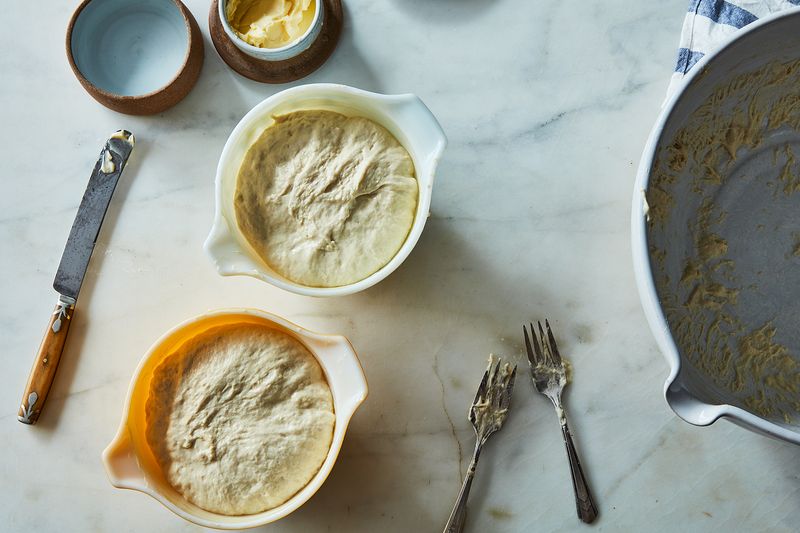
But Stafford also uses some very smart tricks for cracking the whip to get the yeast to do its thing. First, she calls for instant yeast, which can be mixed straight into the flour, so there's no need to activate the yeast in warm water first. You still want to start with lukewarm water, to get the yeast going (without killing it), so she helps you divine lukewarm water without a thermometer or guesswork, by combining 1/2 cup boiling water with 1 1/2 cups cold. Then, to create a warm, draft-free environment in which the bread will rise quickly, she simply preheats the oven for 1 minute, then shuts it off: Cozy proofing cubby, check.
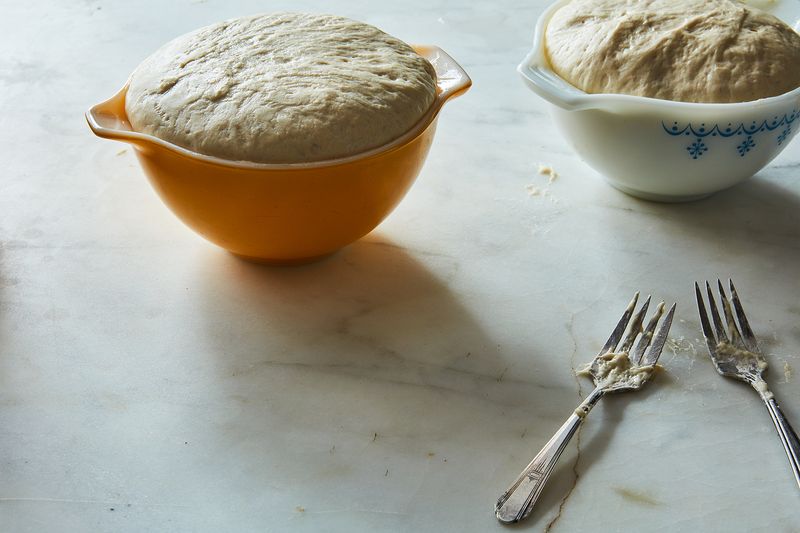
All of this means you see (and smell) poofy, stretchy, bubbling, billowing dough quite fast, so you needn’t wait and wonder anxiously if your yeast is dead, or if your impression of a warm spot in the kitchen matches anyone else’s.
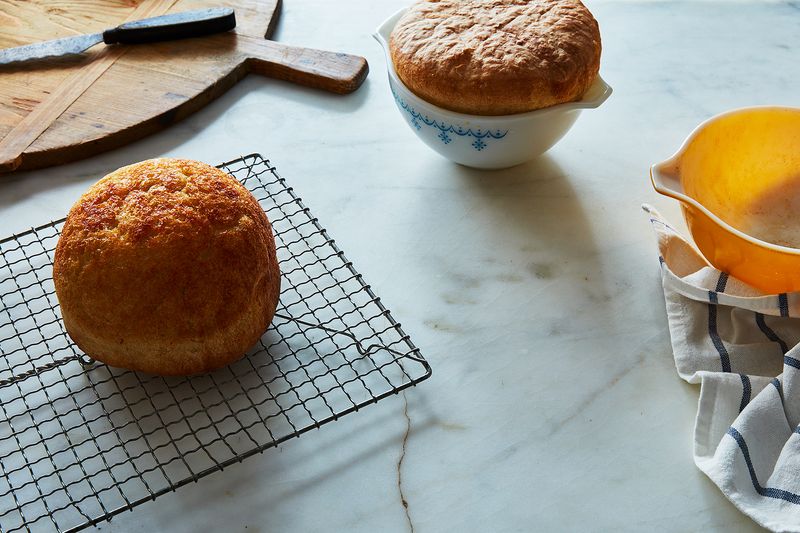
As Stafford writes, “It is not artisan bread, and it’s not trying to be.” And you very well may like it better than the finest artisan bread. I do. Although even if you don't, her book does give instructions for adapting this bread in just about every way imaginable, including several ways to make it come closer to artisan, depending on your definition. (A darker crust, more fermented flavor, hand-milled wheat? She has helpful suggestions for all of it.)
Make it for your family, your roommates, yourself—tonight. Then decide who you want to invite over next. “I whole-heartedly believe that if you know how to make bread you can throw one hell of a dinner party,” Stafford wrote in that fateful blog post back in 2012. “Because people go insane over homemade bread.”
Alexandra Stafford's No-Knead Peasant Bread
- 4 cups (512 grams) unbleached all-purpose flour
- 2 teaspoons kosher salt
- 2 teaspoons sugar
- 2 1/4 teaspoons instant yeast
- 2 cups lukewarm water, made by mixing 1/2 cup boiling water with 1 1/2 cups cold water
- Softened unsalted butter, for greasing
Photos by James Ransom
This article was written by Kristen Miglore from Food52 and was legally licensed through the NewsCred publisher network. Please direct all licensing questions to legal@newscred.com.


